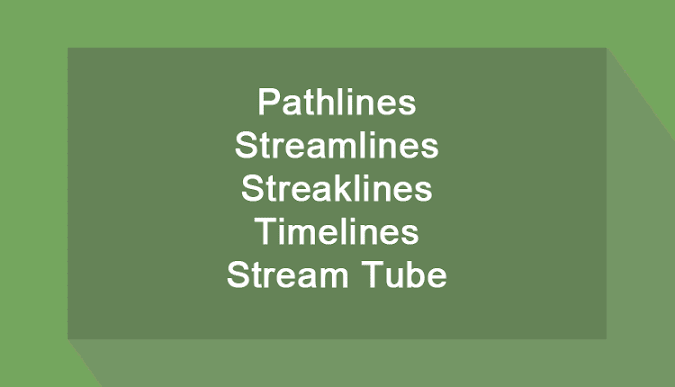Flow Line Fundamentals: Guide to Pathlines, Streamlines, Streaklines, Timelines, Stream Tube

In order to visualize fluid flow, mainly three types of lines are defined. They are (i) streamline (ii) streak line, (iii) path line. They are same for steady flow but have importance in unsteady flow.
Pathlines
Streamlines
It is the curve used more often than the pathline. Streamline is an imaginary curve such that a tangent drawn on this curve represents the direction of instantaneous velocity at that point. Streamlines cannot intersect because a fluid particle cannot have two different velocities at the same time.Streaklines
Another form of visualization is a streakline. It is an instantaneous position of fluids that have passed through a fixed point of the flow field. To obtain streakline, a dye is injected into liquid or smoke in gas at a fixed point in the flow field so as to trace the subsequent position of fluid passing through it. So it is also called the dye line.- In steady flow, there is no geometrical difference between pathline, streamline, and streakline (they are identical).
- There is no velocity component normal to the streamline.
Timelines
Stream tube

This concept used for general flow analysis. Stream tube is a set of streamlines starts from points that form closed loop. Resultant shape is an imaginary tube. They constructed so that the velocity vector is tangent to the surface at any point.
Properties of stream tube
- Streamlines bound the stress tube.
- There is no flow across the imaginary walls of the stream tube. They can flow only through the ends.
- The flow through the stream tube is unidirectional.


